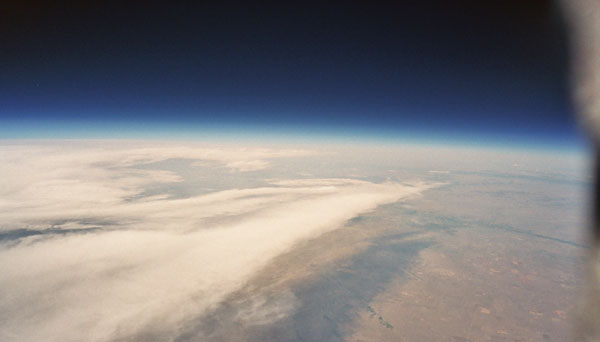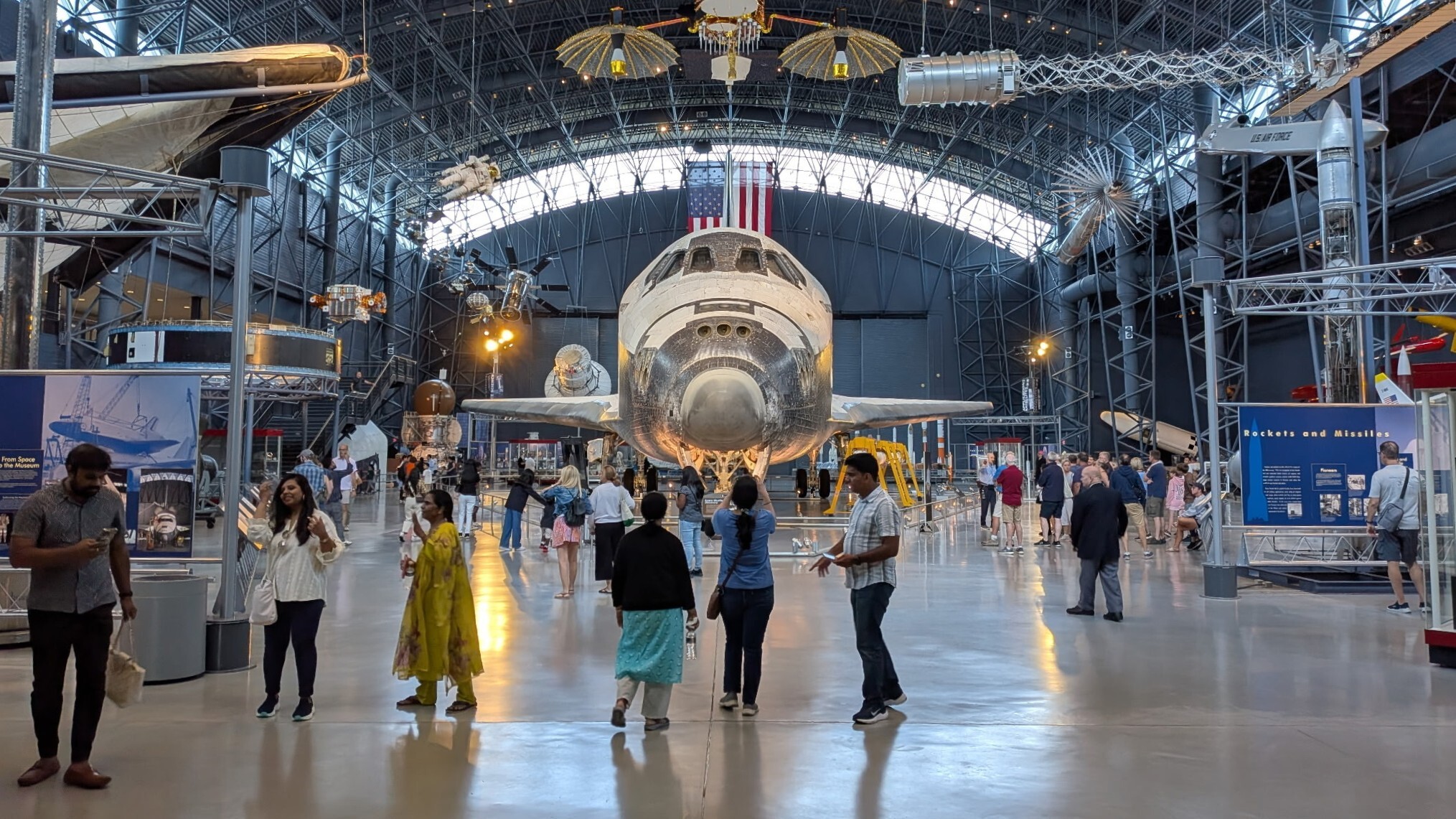Lofty Goals For Higher Education: Students Build and Test Near-Space Technology

BOULDER, Colorado - For students seeking higher education, you can't do much better than a classroom at the edge of space.
Thanks to Student Hands-on Training (SHOT) workshops, aspiring satellite researchers can trial-run payload ideas by getting a lift from skyward-soaring balloons. SHOT activities are on-going at the NASA-funded Colorado Space Grant Consortium at the University of Colorado.
Since the late 1980s, the consortium has given students hands-on experience with real-world space projects, ranging from balloon-toted payloads to small orbiting spacecraft, as well as telescopes and reduced gravity experimentation.
SHOT is partnered with the Air Force Research Laboratory's (AFRL) University Nanosat Program that is funded through the Air Force Office of Scientific Research. The objective is to foster student creativity and innovation in designing, fabricating, testing and flying small satellites.
Edgy side of space
"What hooks the students is that they are building things that fly to the edge of space," said Chris Koehler, Director of the Colorado Space Grant Consortium here at the University of Colorado at Boulder. "Building something with their own hands that's going to space is what draws them in," he told SPACE.com.
SHOT workshops have been underway for four years, with universities from around the country taking part, Koehler explained. Just last month, two balloon launches hauled 10 student packages high above Earth with all of them successfully recovered.
Breaking space news, the latest updates on rocket launches, skywatching events and more!
Not all the payloads worked as planned, Koehler added. "I told them--as I do other students--that you usually learn more from your failures than you do your successes."
The idea behind SHOT is to give students an inexpensive lift to near-space, enabling them to demonstrate some aspect of a small satellite mission. It coincides with and feeds student talent into the University Nanosat Program--a competition to design and build a working satellite, from initial concept to a final working vehicle stage. The winning team's design this time around must be flight-ready by June 2007.
Wild, whipped around journey
Koehler said that SHOT workshops involve students using a "poor person's composite"--thin honeycombed paper with a foam core--to fabricate the payload casing. Inside the boxy housing all manner of devices can be installed: a camera, gravity-sensors, accelerometers, and pressure monitoring devices, along with batteries, timing switches and computer processor units.
Working with Edge of Space Sciences, Inc. in nearby Littleton, Colorado, SHOT team members attach their respective experiments to a stratospheric high-altitude helium balloon. As many as 10 to 12 payloads, each weighing roughly 3 pounds (1.5 kilograms) are strung out on a long cord that's attached to the balloon.
Launched from an athletic field at a high school situated in Deer Trail, Colorado, the released balloon takes about 90 minutes to ascend to roughly 100,000 feet (30,480 meters) altitude. The balloon then bursts, setting free the cord-mounted payloads. A parachute lowers the string of student-built experiments--but it's a wild, whipped around journey that has the payloads back on terra firma some 45 minutes later.
High above Earth, student payloads see an environment similar to what an Earth satellite experiences. "You can do tests on the ground," Koehler advised, like putting your payload in a cooler of dry ice to reach cold temperatures or in a bell jar to get a space-like vacuum. "But it's hard to do all of those at the same time," he advised, to give a payload a real shakeout.
Hands-on, team-building
Koehler said that he's constantly surprised with experiments that students propose.
One group took samples of bacteria from the upper atmosphere. Various types of batteries have been hauled up for evaluation at different temperature regimes and vacuum conditions. Another student team recorded sounds that propagate through the Earth's atmosphere at varying altitudes - like the roar from jetliners that are far, far away.
Individual balloonsats can be built for $100, or less, Koehler said, with the price tag for a balloon carrying the payloads hovering around $1,000.
What things can go wrong?
"The biggest failure is very similar to real spacecraft...and that is power. Temperature affects the power greatly. If you design a power system to be robust, more than likely your mission will succeed," Koehler added.
The bottom line to high-altitude student experiments is the hands-on, team-building that occurs, Koehler said. Universities are turning out students that are very educated and very smart. "But when you put them down in front of a real world situation, are they going to succeed? I think you need to couple that with hands-on experiences," he concluded.
Concept-to-flight experience
Looking toward the future, SHOT is in live long and prosper mode.
The SHOT workshop has been an outstanding success every summer, said Scott Franke, Program Manager/Mechanical Engineer, University Nanosat Program for the Air Force Research Laboratory's Space Vehicles Directorate at Kirtland Air Force Base, New Mexico.
"In the next few years, SHOT is looking to expand towards sounding rocket opportunities that will put the universities on the edge of orbit, along with maintaining the current balloon capabilities," AFRL's Franke told SPACE.com. "Through SHOT, both balloon launches and sounding rockets each have a unique and vital role in seeing university payloads and team expertise evolve towards spaceflight."
Franke said that by providing suborbital launch opportunities for the students involved in the University Nanosat Program, SHOT is a compressed-schedule concept-to-flight experience that every school in the program has the opportunity to experience and enjoy.

Leonard David is an award-winning space journalist who has been reporting on space activities for more than 50 years. Currently writing as Space.com's Space Insider Columnist among his other projects, Leonard has authored numerous books on space exploration, Mars missions and more, with his latest being "Moon Rush: The New Space Race" published in 2019 by National Geographic. He also wrote "Mars: Our Future on the Red Planet" released in 2016 by National Geographic. Leonard has served as a correspondent for SpaceNews, Scientific American and Aerospace America for the AIAA. He has received many awards, including the first Ordway Award for Sustained Excellence in Spaceflight History in 2015 at the AAS Wernher von Braun Memorial Symposium. You can find out Leonard's latest project at his website and on Twitter.
